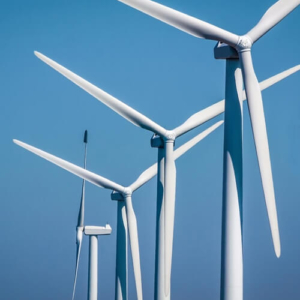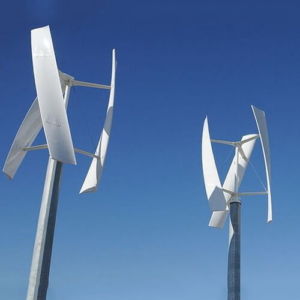What is wind turbine?
The basic idea behind how a wind turbine operates is that, unlike a fan, which creates wind by using energy, a wind turbine creates electricity by utilising wind. A turbine’s blades, which resemble propellers, rotate around a rotor, spinning a generator to produce power.
Solar energy takes the form of wind, which is brought on by three related simultaneous events:
- The sun heating the atmosphere unevenly;
- Irregularities on the earth’s surface.
- The earth’s rotation.
Wind flow patterns and speeds
T are many different types of flora, aquatic bodies, and geographical variations that affect the wind flow patterns and speeds. Humans utilise this wind flow, or motion energy, for a variety of activities, including sailing, kite flying, and even electricity generation.
Both “wind energy” and “wind power” refer to the method of using the wind to produce mechanical or electrical energy. This mechanical energy can be applied to certain tasks (like grinding grain or pumping water) or transformed into electricity using a generator.
A wind turbine turns wind energy
The rotor blades of a wind turbine, which function similarly to an aeroplane wing or a helicopter rotor blade, convert wind energy into electricity using aerodynamic force. The air pressure on one side of the blade falls as wind passes across it. Both lift and drag are produced by the different air pressure on the blade’s two sides. The rotor spins because the force of the lift is greater than the force of the drag. If the generator is a direct drive turbine, the rotor is connected to it directly; otherwise, a gearbox that speeds up the rotation and permits a physically smaller generator is used. Electricity is produced as a result of the conversion of aerodynamic force into generator rotation.
How a Wind Plant Works
Wind power plants use a number of wind turbines positioned together to generate electricity. A wind power plant’s location is influenced by a variety of elements, including the wind speed and direction, the topography of the area, the availability of electric transmission, and other siting concerns. Each turbine at a utility-scale wind farm produces electricity that flows to a substation, where it is transferred to the grid and used to power our communities.
Wind Turbine Features
Transmission
Transformers
Substation
Wind Turbine Tower
Wind Direction
Wind Vane
Anemometer
Blades
Nacelle
Yaw System
Pitch System
Hub
Gearbox
Rotor
Low-Speed Shaft
Main Shaft Bearing
High-Speed Shaft
Generator
Controller
Brake
Types of Wind Turbines
The majority of wind turbines fall into two basic types:
Horizontal-Axis Turbines
Horizontal-axis wind turbines are what many people picture when thinking of wind turbines. Most commonly, they have three blades and operate “upwind,” with the turbine pivoting at the top of the tower so the blades face into the wind.
Vertical-Axis Turbines
Vertical-axis wind turbines come in several varieties, including the eggbeater-style Darrieus model, named after its French inventor. These turbines are omnidirectional, meaning they don’t need to be adjusted to point into the wind to operate.
Applications of Wind Turbines
Modern wind turbines can be categorized by where they are installed and how they are connected to the grid:




